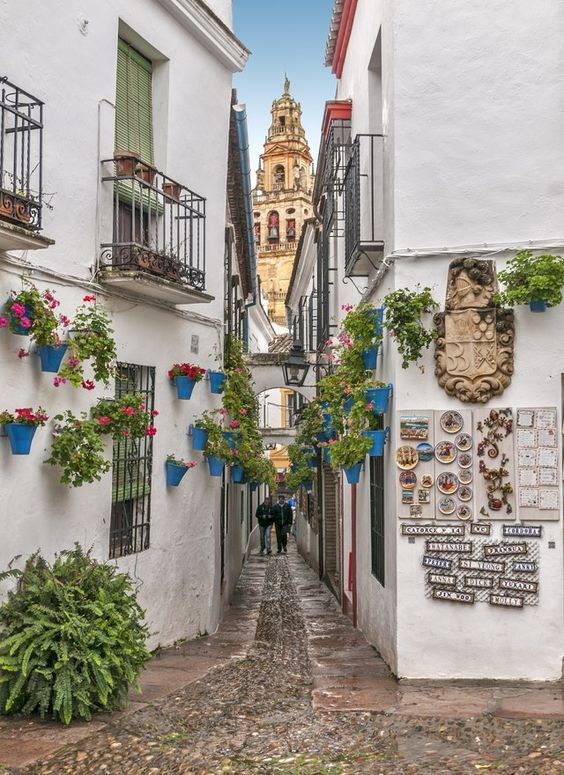Juderia
The Juderia de Cordoba
The Judería de Córdoba, ‘the Jewish Quarter of Córdoba’, is the area of the Spanish city of Córdoba in which the Jews lived between the 10th and 15th centuries. It is located in the Historic centre of Córdoba, northeast of the Mezquita Catedral (the Mosque-Cathedral), in the area of the following streets : Deanes, Manríquez, Tomás Conde, Judíos, Almanzor and Romero.
“It is part of the historic centre of Córdoba which was named a World Heritage Site by UNESCO in 1994”
Córdoba went through a brilliant period when three peoples (Christian, Jewish and Muslim) and their respective religions lived passively, offering the world an example of tolerance and intelligent civilisation.
During this period, the majority of the Jewish people lived under the rule of Islam, and it was then when the long and brilliant period of the Jewish-Arab symbiosis of Córdoba began. During the four years of Umayyad hegemony, cultural, artistic and commercial Muslim activities turned Al-Ándalus (Muslim Spain) into the most cultured country in Europe.
During the 10th century, Córdoba was the largest economic and cultural centre of the Western world and an example of coexistence between different cultures, Jewish people, Christians and Muslims.
In 756 AD, the Umayyad Abd-al-Rahman I, turned Córdoba into the capital of Muslim Spain and during the following 250 years it turned into one of the largest commercial and intellectual centres in the world. In 929 AD, Abd-al-Rahman III, proclaimed the caliphate and the city reached its highest splendour, rivalling Damascus and Baghdad, centres of great economic and intellectual prosperity. From the 11th century, due to the disintegration of Muslim power in Spain, part of the cultural success of Córdoba was lost, although it remained a centre for people of literature and scholars. In the 12th century, the actions of philosophers Averroes and Maimónides stand out. In 1236, Fernando III el Santo (The Saint) took the city and integrated it into the Kingdom of Castile.
UNESCO World Heritage Site
Part of the historic centre of Córdoba which was named a World Heritage Site by UNESCO, in 1994.
Date: August 2018
Photographer: Merche Mateo
Additional information: wikipedia





